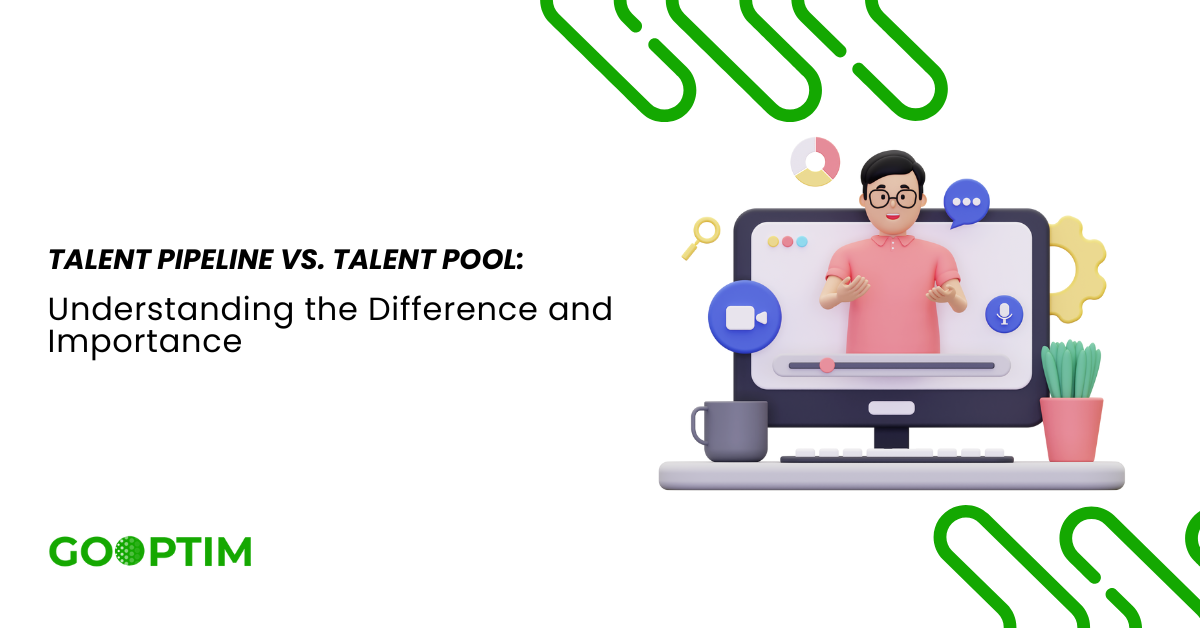
In the dynamic world of talent acquisition, two pivotal concepts frequently take centre stage: the “Talent Pipeline” and the “Talent Pool.” These concepts serve as the bedrock for organisations seeking to attract and retain top-tier talent in today’s competitive landscape. In the fast-paced and highly competitive landscape of the modern job market, it has become imperative for organisations to develop and implement robust talent acquisition strategies. These strategies are not only crucial for attracting top-tier candidates, but also for retaining them in the long run. In this article, we will explore the importance of effective talent acquisition and how it can give organisations a competitive edge in the race for talent.
Defining Talent Pool And Talent Pipeline:
Talent Pipeline:
A talent pipeline systematically identifies, engages, and develops candidates for current and future company positions. Its fundamental purpose is to establish a pool of high-potential candidates that may not be immediately accessible but have the skills, credentials, and cultural fit to flourish in the firm.
Talent Pool:
However, a Talent Pool includes all people who have expressed interest in working for an organisation or applied for specific positions. It includes active job seekers and passive applicants who have submitted resumes or showed interest in working for the company but are not presently being considered for any position.
Difference Between Talent Pipeline and Talent Pool:
1. Purpose:
- Talent pipeline: A talent pipeline’s main goal is to cultivate and forge connections with possible applicants, with an eye towards future recruiting requirements. It entails strategic involvement, the development of skills, and the promotion of enduring interest in the organisation.
- Talent Pool: A talent pool is a repository of potential employees who have expressed interest in or submitted applications for open positions. It covers both short- and long-term hiring requirements and offers a quickly available pool of candidates when sudden openings occur.
2. Time Horizon:
- Talent Pipeline: Long-term talent planning, frequently spanning several months or years, is the subject of talent pipeline. In order to guarantee a consistent supply of skilled people as opportunities become available, it involves fostering prospects through talent development programmes, internships, mentoring, and other efforts.
- Talent Pool: This resource is used to fill both current and upcoming hiring needs. The majority of applicants in the talent pool are actively looking for possibilities or have recently applied for openings inside the company.
3. Engagement Approach:
- Talent Pipeline: Organisations actively interact with candidates in the talent pipeline, developing relationships through individualised communication, networking occasions, and opportunities for professional growth. The goal is to provide candidates a good experience and a sense of belonging.
- Talent Pool: Depending on the requirements of the organisation, engagement with the Talent Pool may change. There may be some communication, but it’s possible that it’s not as often or as in-depth as it is with the Talent Pipeline.
Importance of Talent Pipeline and Talent Pool:
- Talent Pipelines ensure a steady supply of skilled applicants for important positions, enabling long-term workforce planning. This proactive approach helps companies fill important roles quickly and saves time and money.
- Talent Pipelines prevent downtime and lost production by building relationships with potential employees before filling roles. Developing internal candidates through the pipeline might also save money over time.
- Talent Pipelines let companies evaluate and choose the best people based on their performance in development programmes, internships, and other interactions. This method improves recruiting decisions and talent acquisition.
- A well-managed Talent Pipeline boosts corporate brand. It attracts top individuals seeking long-term careers by showing a commitment to talent development and employee growth.
For HR professionals and recruiting managers to create efficient talent acquisition strategies, they must fully comprehend the distinction between a talent pipeline and talent pool. The timely and effective fulfilment of an organisation’s talent demands depends on both ideas. Organisations may stay ahead in the competitive employment landscape by creating a strong talent pipeline and keeping a dynamic talent pool, securing a consistent inflow of qualified candidates and cultivating a strong employer brand.
Read More: Battling Recruitment Plagiarism: The Power of Recruitment Automation Software






